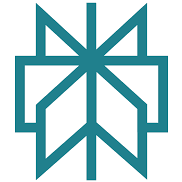How To Create a Business Plan for Your Digital Product Store


Starting a digital product store? Here’s why you need a business plan and how to create one:
- Set Clear Goals: Define your objectives, strategies, and resource allocation to stay on track.
- Attract Investors: Show potential investors why your business is worth their time and money.
- Daily Guidance: Use your plan to manage daily operations and focus on long-term growth.
Key Steps:
- Understand Your Market: Research your audience, their needs, and competitors.
- Differentiate Your Products: Identify what makes your store unique.
- Plan Your Product Portfolio: Offer a mix of products, bundles, and pricing tiers.
- Set Financial Goals: Estimate revenue, track expenses, and calculate your break-even point.
- Build a Marketing Strategy: Choose the right channels, create engaging content, and set an advertising budget.
- Optimize Store Operations: Automate product delivery and improve customer support.
Quick Tip: Track metrics like conversion rates, customer acquisition costs, and average order value to measure success.
A solid business plan ensures your store is ready to grow while staying profitable. Let’s break it down step by step.
Core Business Elements
Target Market Analysis
Market research is key to identifying your audience, gauging demand, and directing marketing efforts efficiently.
Break down your market into these categories:
- Demographics: Factors like age, location, income, and occupation
- Psychographics: Values, interests, and lifestyle preferences
- Behavior: Online shopping patterns, digital product usage, and price sensitivity
- Pain Points: Specific challenges your products aim to solve
Use this segmentation to create a clear profile of your ideal customer. From there, develop a strong unique selling proposition (USP) that highlights what makes your store stand out.
Business Differentiators
For a digital product store, identifying what makes your products stand out is essential. Without a clear USP, your business risks blending into the crowd.
"Strong products and services are highly differentiated from all other products and services. It’s that simple. It’s that difficult." – Austin McGhie, Brand Is a Four Letter Word
Here’s how to pinpoint your differentiators:
- Study competitors by analyzing their marketing strategies and online presence
- Collect ideas from your team to gain diverse perspectives
- Use customer feedback to understand what your audience values
- Test your USP in the market and refine it based on results
Product Portfolio Planning
Your product lineup should align with market needs to boost revenue. Bundling products is an effective way to increase average order value. For instance, ProfitTree‘s January 2025 analysis revealed that Etsy sellers successfully combined branding kits, social media templates, and financial planning tools into higher-priced bundles.
When planning your portfolio, focus on:
- Product Mix: Offer a balance of entry-level and premium products
- Bundle Strategy: Group related products to provide extra value
- Pricing Tiers: Clearly define different price points for your offerings
- Scalability: Ensure products can be delivered efficiently as demand grows
These steps will serve as the foundation for your financial planning and revenue goals.
Business Goals and Metrics
Setting clear goals and timelines is essential for growing your digital store. Research indicates that digital stores typically see a 2–2.5% conversion rate from traffic.
Sales and Revenue Goals
Define revenue targets by segment and establish growth metrics. Here’s an example of how you can segment your market:
| Market Segment | Target Revenue | Avg. Sale Price | Sales Cycle | Closing Ratio | Required Sales |
|---|---|---|---|---|---|
| Premium | $30,000,000 | $100,000 | 9 months | 25% | 300 |
| Standard | $22,000,000 | $50,000 | 6 months | 20% | 440 |
| Basic | $8,000,000 | $10,000 | 4 months | 30% | 800 |
These numbers will help you estimate how many qualified leads you need and guide your marketing efforts.
Success Metrics
Track these key performance indicators (KPIs) to evaluate your store’s performance:
Revenue Metrics
- Net profit margin
- Gross margin per product
- Customer acquisition cost (CAC)
- Customer lifetime value (CLV)
Customer Metrics
- Lead conversion rates
- Customer retention rate
- Customer satisfaction scores
- Average order value
"If you can’t measure it, you can’t improve it".
Use your store’s analytics dashboard to monitor these metrics weekly or monthly. Align them with your growth plan to ensure steady progress.
Growth Timeline
Structure your growth in phases with a clear timeline:
Pre-Launch Phase (15 weeks)
- Weeks 15–13: Define and validate your core product concept
- Weeks 12–10: Create and beta-test products
- Weeks 9–7: Develop positioning and messaging
- Weeks 6–4: Prepare launch content and marketing materials
- Weeks 3–1: Set up store infrastructure and test systems
Launch Phase (1 week)
- Days 1–3: Release your initial product
- Days 4–7: Monitor performance and gather feedback
Post-Launch Phase (1 week)
- Analyze conversion rates and ROI
- Collect customer testimonials
- Make improvements based on data
For example, Tonia Emanuel successfully refined her product offerings by incorporating client feedback, ensuring her mastermind group addressed unmet needs.
Review and adjust your timeline every quarter to stay aligned with market trends and business goals.
Marketing Plan
Marketing Channel Selection
Choosing the right channels is crucial for your store’s growth. A mix of different channels often delivers the best results.
- Paid Media: Provides instant visibility.
- Owned Media: Helps establish long-term connections with your audience.
- Earned Media: Builds trust and credibility organically.
Check your store’s analytics to identify where your audience spends the most time. Focus your initial efforts on a few key channels to make the biggest impact.
Content Strategy
Create a content calendar that includes tutorials, how-to guides, customer success stories, and industry insights. Use tools like polls or surveys to engage your audience and gather feedback to shape your content.
"Always keep adjusting. It is essential as a small business owner that you are flexible. When you need to change your advertising budget, do it." – Francesca M. Nichols, Best Tech Writer Award Winner
Advertising Budget
Set aside 7–8% of your gross revenue for marketing. For new stores, starting with $300–$500 per month is a good baseline. Monitor key metrics like cost per acquisition, return on ad spend, and engagement rates. Keep in mind that the average landing page conversion rate is about 2.35%. Use this data to refine your campaigns and ensure your marketing aligns with your store’s operations, as discussed in the next section.
Store Operations
Once you have your business and marketing strategies in place, organize your store to run as efficiently as possible.
Store Platform Setup
Start by structuring your product catalog and setting up a user-friendly dashboard for easy management.
- Product Categories: Create a clear structure that makes it simple for customers to browse. For instance, if you’re offering digital courses, group them by skill level (beginner, intermediate, advanced) and topic.
- Product Templates: Use standardized templates with clear descriptions, pricing, and delivery details to maintain consistency.
- Access Management: Assign roles and permissions to ensure smooth collaboration and secure operations.
After setting up your platform, turn your attention to automating product delivery to save time and handle growth.
Product Delivery System
With your store organized, automation can help you meet customer demand more efficiently.
| Delivery Component | Purpose | How It Works |
|---|---|---|
| Instant Access | Deliver products instantly | Automated emails with download links |
| License Management | Monitor product use | Digital license key systems |
| Update Distribution | Keep products up-to-date | Automated version control |
| Access Recovery | Assist with lost downloads | Self-service recovery portals |
By automating these processes, you can handle spikes in demand while maintaining a smooth customer experience.
Customer Service Framework
Happy customers are more likely to spend – 140% more, in fact.
Build a support system that covers multiple channels:
- Self-Service Resources: Create a detailed knowledge base. Research shows 55% of people prefer solving issues on their own.
- Live Support: Offer live chat during business hours. With 42% of users relying on live chat, it’s a must-have for many businesses.
- Email Support: Companies using email support see a 20% higher return on investment compared to those that don’t.
"When it comes to service, companies create loyal customers primarily by helping them solve their problems quickly and easily." – Harvard Business Review
Automate simple responses but personalize answers for more complex issues. Regularly track response times and satisfaction scores to improve. Collect feedback to refine your products and support systems over time.
Financial Planning
Effective financial planning is crucial for avoiding one of the biggest challenges startups face: running out of money. This issue impacts 38% of new businesses. Let’s break down the key financial elements you need to consider.
Cost Analysis
Start by organizing your expenses into two categories: one-time setup costs and recurring operational costs. Here’s a quick overview:
| Cost Type | Key Items | Estimated Range |
|---|---|---|
| One-Time Setup | Business registration, logo design, website development | $1,500 – $5,000 |
| Monthly Fixed | Software subscriptions, hosting, insurance | $200 – $500 |
| Monthly Variable | Payment processing fees, marketing, support tools | 3–8% of revenue |
To keep initial costs low, consider using virtual offices or open-source tools. It’s also smart to set aside 10–15% of your budget as a contingency fund for unexpected expenses. Once your expenses are mapped out, focus on forecasting revenue to determine profitability.
Sales Forecasting
Accurate revenue projections are essential. A bottom-up approach often provides better accuracy than traditional top-down methods. Use this formula to estimate monthly revenue:
Monthly Revenue = (Monthly Website Visitors × Conversion Rate × Average Product Price)
For example, if your site gets 5,000 visitors a month, has a 2% conversion rate, and your average product price is $49, your estimated monthly revenue would be about $4,900.
"It’s not about guessing the future correctly… Instead, it’s about setting down assumptions, expectations, drivers, tracking, and management. It’s about doing your job, not having precognitive powers." – Tim Berry
Update your projections monthly based on real data, adjusting for seasonal shifts and market trends.
Break-even Analysis
Understanding when your business will become profitable is key. Use the break-even formula to calculate this point:
Break-Even Point = Fixed Costs ÷ (Average Product Price – Variable Costs per Sale)
Fixed costs typically include platform subscriptions, marketing tools, and professional services. Variable costs might include payment processing fees (2.9% + $0.30 per transaction), affiliate commissions, and customer support expenses.
Track your progress toward profitability by monitoring metrics like monthly recurring revenue (MRR), customer acquisition cost (CAC), average revenue per user (ARPU), and churn rate.
Reducing variable costs can help you reach profitability faster. For example, email marketing is a highly cost-effective strategy, delivering an average ROI of $36 for every dollar spent. This makes it a powerful tool for accelerating your break-even timeline.
Conclusion: Action Steps
Now that you’ve got the basics down, here’s a streamlined plan to get your digital product store up and running:
- Initial Setup and Planning
Start by documenting your main expenses as discussed in the Financial Planning section. Spend 3–4 hours outlining your product lineup and pricing strategy. With Crevio‘s Basic plan at $29/month, you can launch with minimal upfront costs while keeping all your profits.
- Financial Framework
Create a financial dashboard to monitor key metrics like:
- Monthly recurring revenue (MRR)
- Customer acquisition costs
- Time to break even
- Revenue projections (calculated as: Monthly Visitors × Conversion Rate × Average Price)
This will give you a clear picture of your financial health and help guide decisions.
- Implementation Timeline
| Phase | Duration | Key Actions |
|---|---|---|
| Planning | 2–3 weeks | Conduct market research, define your product strategy, and set financial goals. |
| Setup | 1–2 weeks | Configure your platform, upload products, and integrate payment options. |
| Launch | 1 week | Test your store, run a soft launch, and start your initial marketing efforts. |
| Review | Monthly | Analyze performance metrics, adjust plans, and focus on growth. |
Plan to review and revise your strategy every quarter to adapt to market changes. Start by launching one flagship product through your Crevio store to test your assumptions and fine-tune your approach before scaling.






